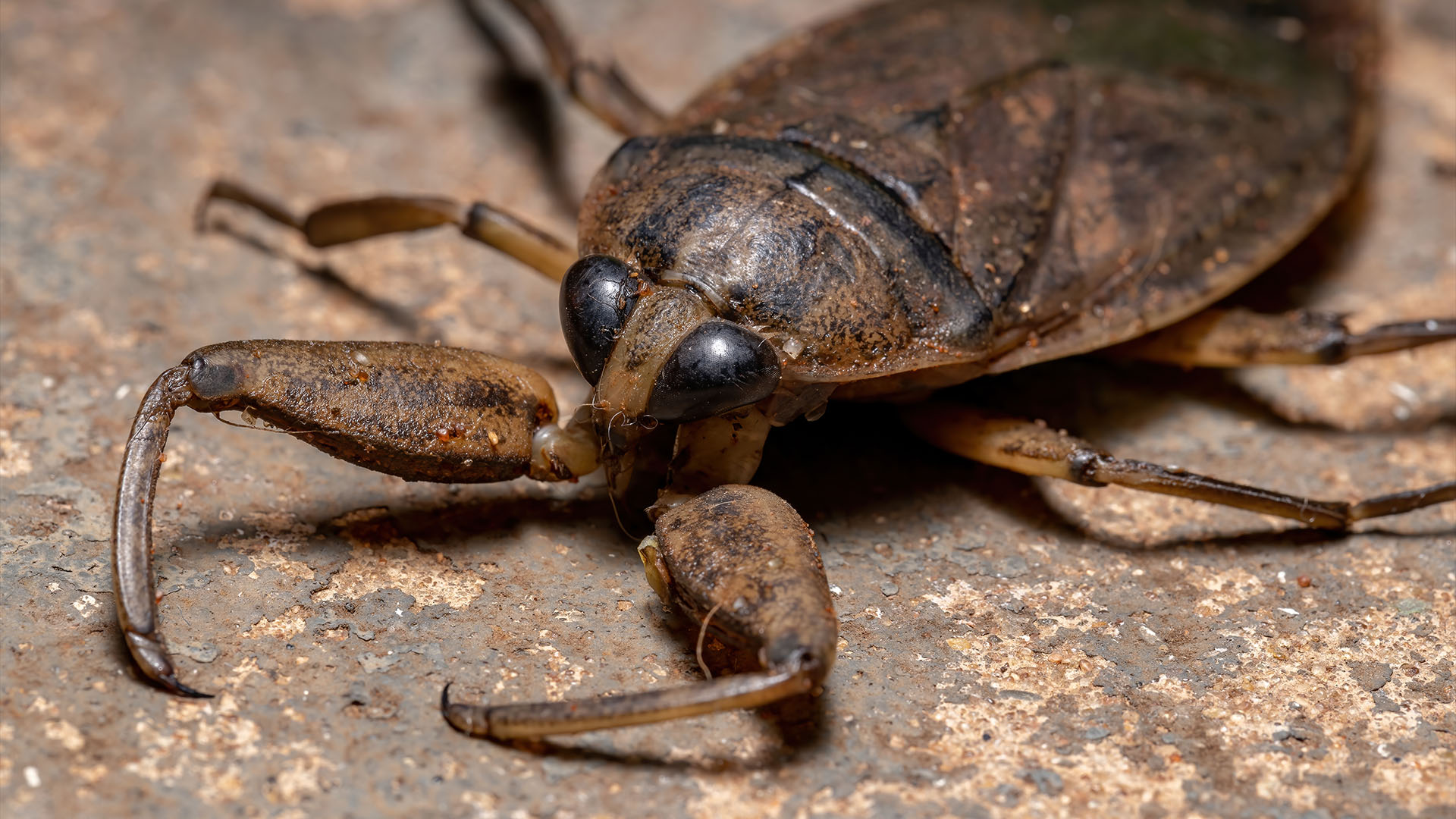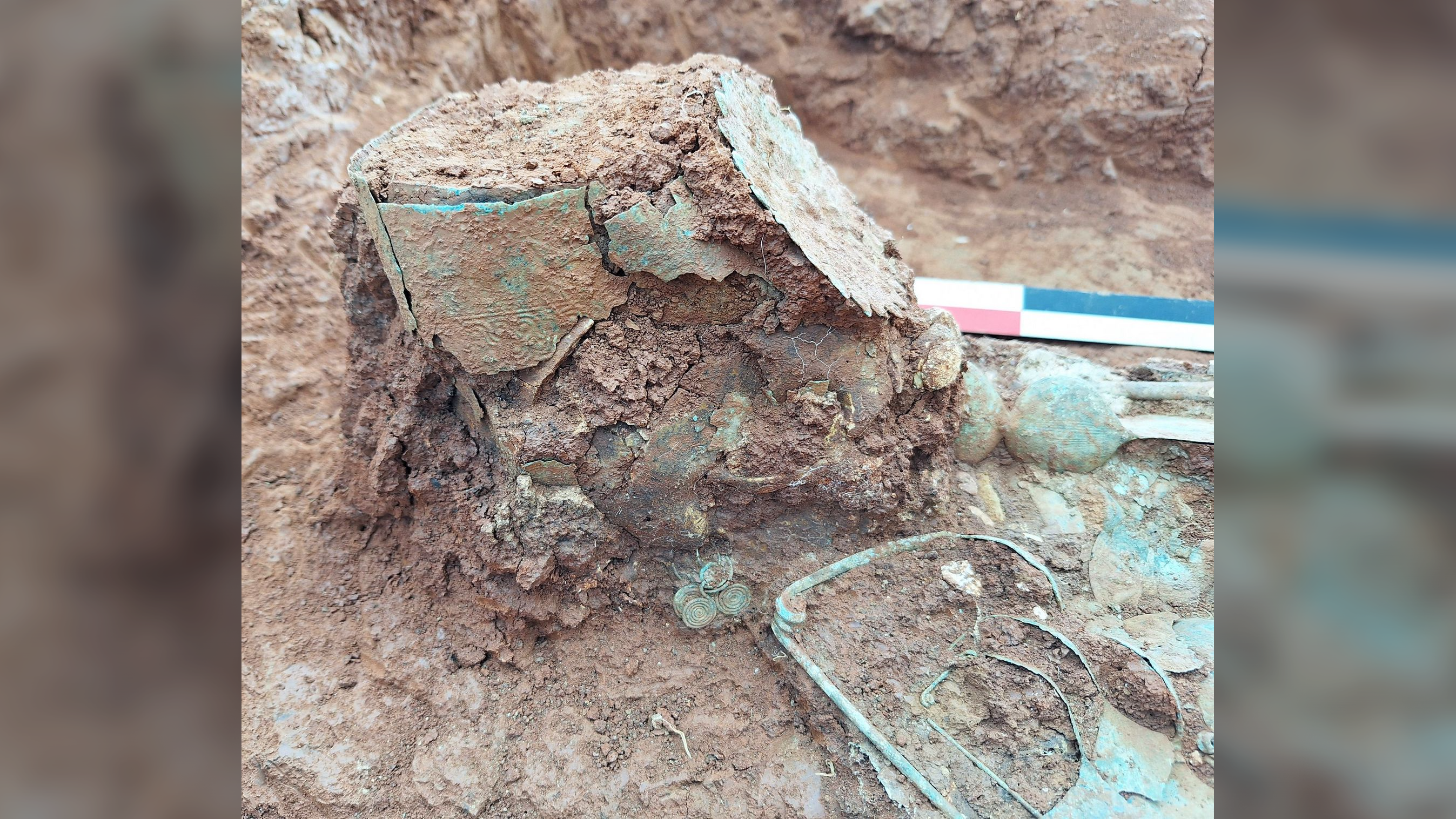Giant 'toe biter' water bugs discovered in Cyprus for the 1st time
Scientists believe toe-biting giant water bugs have arrived in Cyprus from the mainland, but they're not sure why or how.

Giant water bugs that can deliver painful bites are invading the Mediterranean island of Cyprus, a study has found.
The bugs, also called "toe biters," belong to the Lethocerus genus, which includes bird-eating species that can grow to around 4.7 inches (12 centimeters) long. Researchers discovered the fearsome bugs with the help of swimmers on the island's east coast and warned the public to look out for more.
"Cypriots should keep their eyes open and their toes out of the water," the study authors said in a statement on March 20. The researchers presented their findings in a study published Dec. 31, 2023, in the Journal of "Grigore Antipa" National Museum of Natural History.
Giant water bugs live in freshwater habitats such as ponds and marshes around the world, according to the National Park Service. They're equipped with pincer-like appendages and venomous saliva, which allows them to immobilize and suck the liquid out of their prey. These bugs are also known to bite unsuspecting humans between the toes, hence why they're called "toe-biters," though this bite is nontoxic and we're far too big to be their prey.
Related: Watch bizarre video of termites trapped in 'death spiral'
Lethocerus is found near Cyprus in the mainland countries of Turkey, Lebanon, Israel and Egypt but has never before been observed on the island. In the new study, the team looked at posts on local Facebook groups between 2020 and 2021 to collect records of the bugs and learn more about their sudden arrival.
"The records reported in this study were based almost entirely on people who posted photographs and videos on social media groups requesting species determination," the authors wrote in the study.
Get the world’s most fascinating discoveries delivered straight to your inbox.
Seven giant water bugs were recorded on the eastern lowland part of the island, and the researchers went out and found two of these specimens. The retrieved bugs belonged to the species Lethocerus patruelis, which can grow to about 3 inches (8 cm) long. However, the team couldn't identify the remaining bugs' species from photos alone and so recorded them as Lethocerus.
The researchers suspect the bugs flew over from the mainland — but they're not sure why they crossed the open sea. One theory is that lights on the island's east coast attracted the bugs. Another idea is that the bugs migrated to the island for food or were carried there by the elements.
"The specimens landed exhausted on the shoreline, or in some cases in the sea, which could indicate that they were transferred by wind or sea currents from nearby countries," the authors wrote.
While the researchers are confident these bugs are new to the island, and more could be coming, they don't think Lethocerus is a threat to Cyprus' ecosystem. The country has habitats similar to the mainland and hosts some of the bugs' natural predators, including white storks (Ciconia ciconia) and black kites (Milvus migrans).
"This could ensure the biological control of a possible established population," the authors wrote.

Patrick Pester is the trending news writer at Live Science. His work has appeared on other science websites, such as BBC Science Focus and Scientific American. Patrick retrained as a journalist after spending his early career working in zoos and wildlife conservation. He was awarded the Master's Excellence Scholarship to study at Cardiff University where he completed a master's degree in international journalism. He also has a second master's degree in biodiversity, evolution and conservation in action from Middlesex University London. When he isn't writing news, Patrick investigates the sale of human remains.
